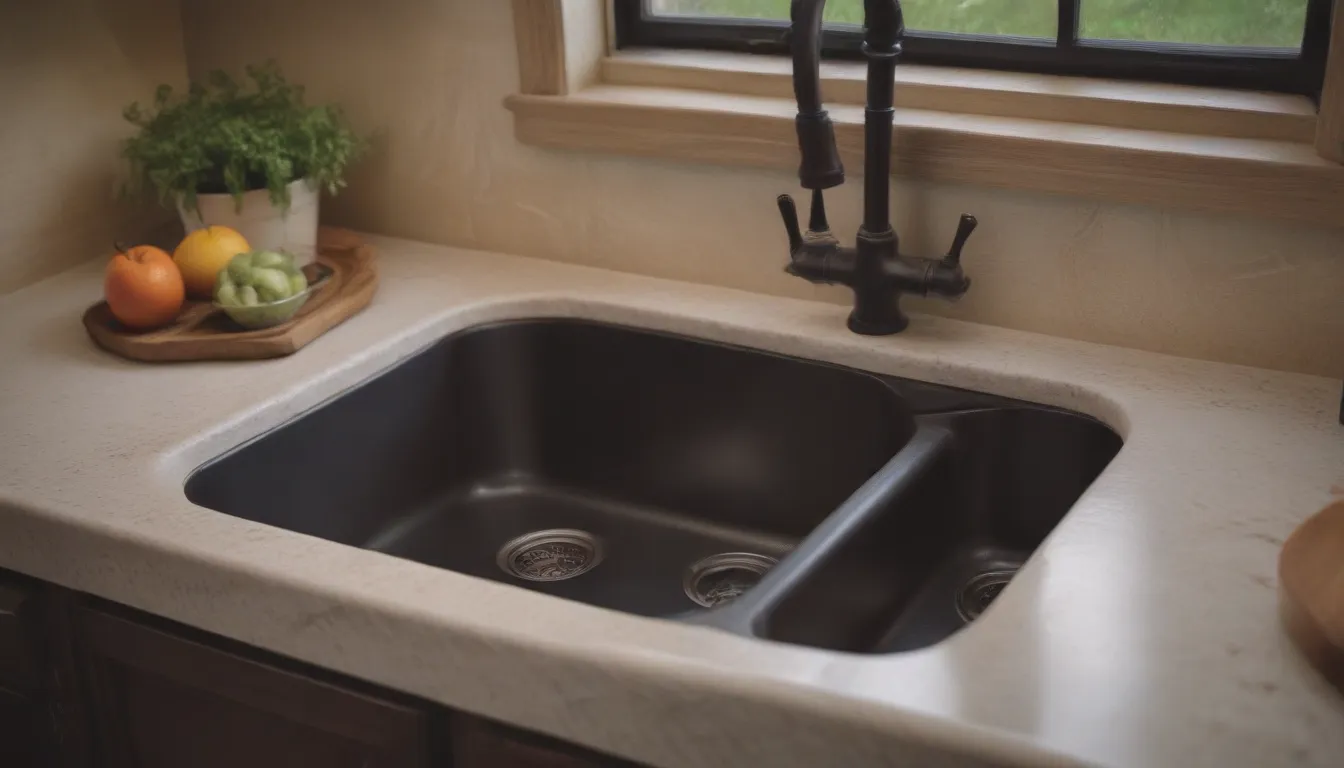Expert Guide to Choosing the Perfect Kitchen Sink

Introduction
Choosing the right kitchen sink is a crucial decision when renovating your kitchen. With so many options available in the market, it can be overwhelming to make the right choice. From traditional top-mount sinks to trendy low divider sinks, there are various types to consider. In this comprehensive guide, we will explore 10 different kitchen sink types, along with their pros and cons, to help you make an informed decision that suits both your kitchen needs and personal style.
Top-Mount, Drop-In, or Self-Rimming Sink
- Description: The most common type of kitchen sink, installed from above with a rim attaching to the counter.
- Pros: Easy to install with no special skills required. Relatively low cost.
- Cons: Rim prevents direct water and debris sweep into the sink. Requires additional cleaning due to the rim.
Undermount Sink
- Description: Attached beneath the counter with special clips, allowing easy cleaning without a rim.
- Pros: Seamless look and higher quality. Easy clean-up with no rim.
- Cons: Higher cost to buy and install. Gunk may collect under the counter.
Double Basin/Bowl Sink
- Description: Dual basins for washing and rinsing/drying operations.
- Pros: Multi-purpose and flexible. Useful in households without dishwashers.
- Cons: Basin size limitation for large items. Less popular with contemporary trends favoring single-basin sinks.
Tip: For households deciding between single and double basin sinks, consider the primary purpose of simplifying the dishwashing process with a double basin sink.
Single Basin/Bowl Sink
- Description: General category of kitchen sinks with a single large basin.
- Pros: Ideal for washing large items. Suited for high-capacity households.
- Cons: Less flexible and requires a separate drying area. Less popular due to inflexibility.
Farmhouse or Apron Sink
- Description: Large single basin sinks with a front wall that forms part of the counter.
- Pros: Allows closer access for users. Generously sized for big pans.
- Cons: Prone to dripping due to lack of barrier. Expensive compared to other styles.
Drainboard Sink
- Description: Small basin with a counter-level drainboard for limited spaces.
- Pros: Efficient draining with a lip around the drainboard.
- Cons: Small basins may not accommodate large items. Limited use for those who rarely hand wash dishes.
Low Divider Double Basin Sink
- Description: Double basin sink with a divider stopping partway up for increased flexibility.
- Pros: Easy to use for food prep. Offers the benefits of single and double basin sinks.
- Cons: Limited space for large items. Higher prices due to limited availability.
Island, Bar, or Prep Sink
- Description: Smaller secondary sink for bartending or supplementary food preparation.
- Pros: Easier food prep for multiple individuals. Great addition for entertaining frequently.
- Cons: May take up valuable counter space unnecessarily. Consider luxury status and budget requirements.
Integrated Sink
- Description: Sinks made of the same material as the countertop for a seamless look.
- Pros: Eliminates under-counter seams for easier cleaning. Stylish and modern design.
- Cons: Custom-order items leading to higher costs. Requires repair rather than replacement if damaged.
Corner Sink
- Description: Double basins set at right angles to utilize corner space effectively.
- Pros: Efficient use of space-wasting corners. Built-in drying area in some models.
- Cons: Expensive and requires custom cuts in counters. Structural strength may be compromised at countertop corners.
Choosing a Sink Material
Different sink materials work best with various countertop types and cleaning preferences.
– Stainless Steel: Best for granite countertops and easy maintenance.
– Porcelain: Easiest to clean and maintain.
– Cast Iron: Durable and expensive, with a unique aesthetic.
– Copper: Unique and expensive but less durable.
– Stone or Fireclay: High heat resistance, easy maintenance, and a long lifespan.
Conclusion
In conclusion, selecting the right kitchen sink is essential for a successful kitchen renovation. Each type of sink offers its own advantages and disadvantages, catering to different kitchen styles and functions. By considering your kitchen requirements, personal preferences, and budget constraints, you can choose the perfect kitchen sink that complements your space and enhances your cooking experience. So, take your time exploring the options and select a sink that not only meets your needs but also adds style and functionality to your kitchen.





